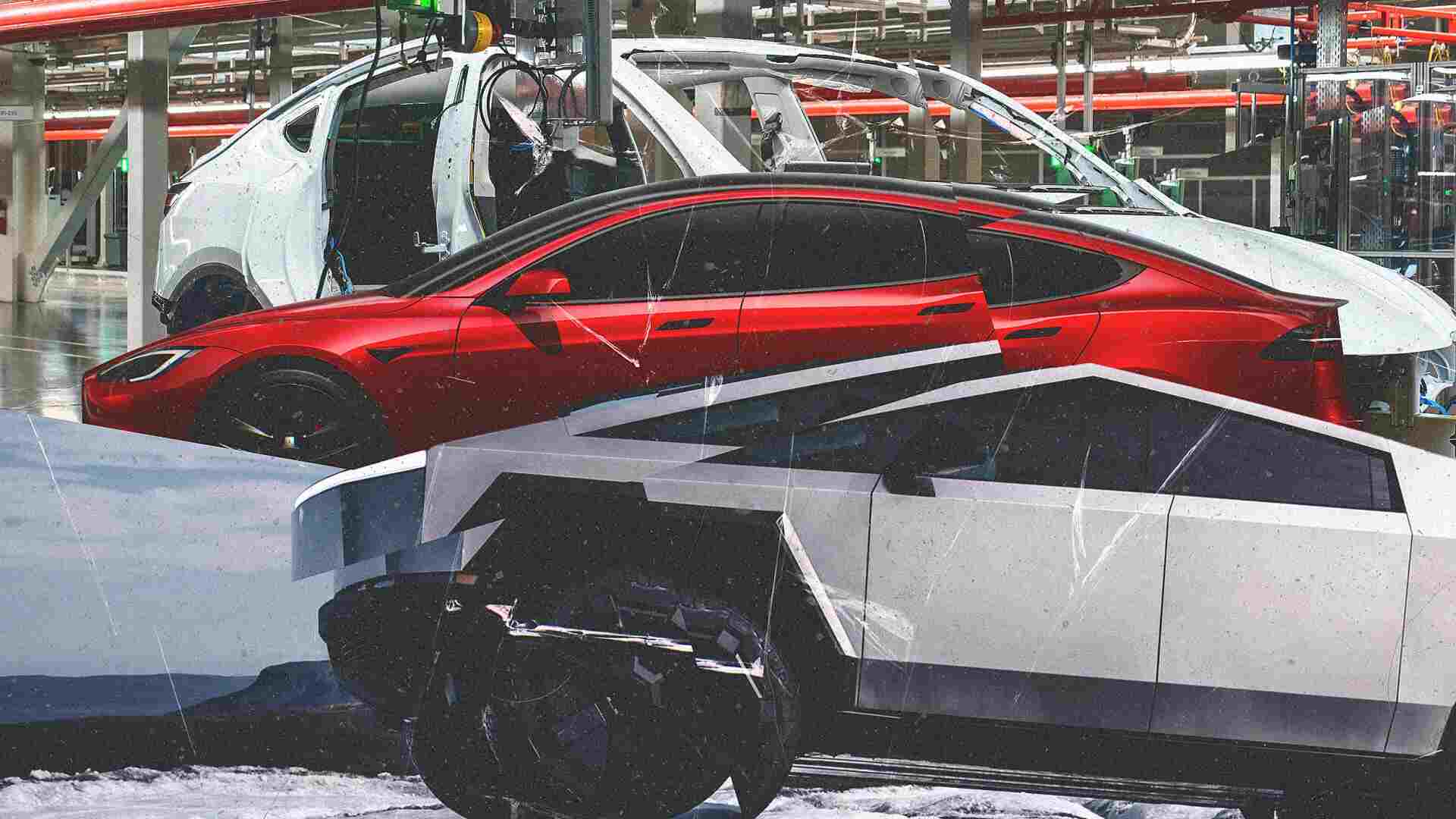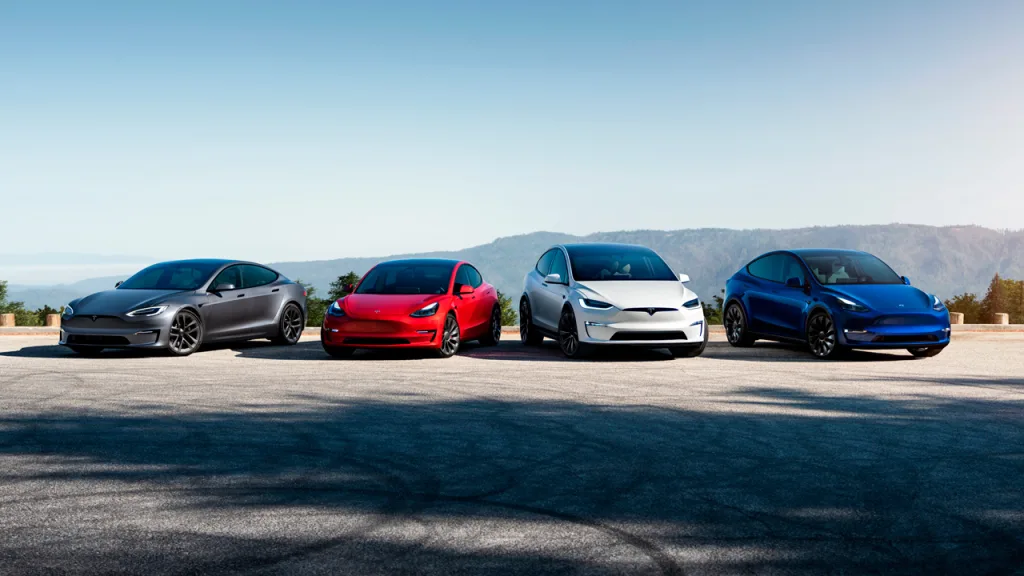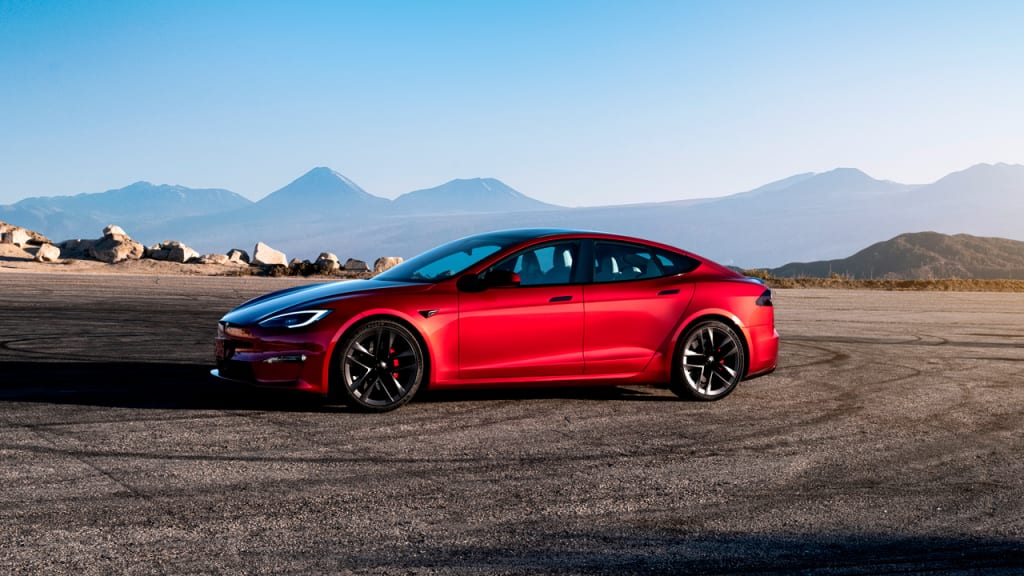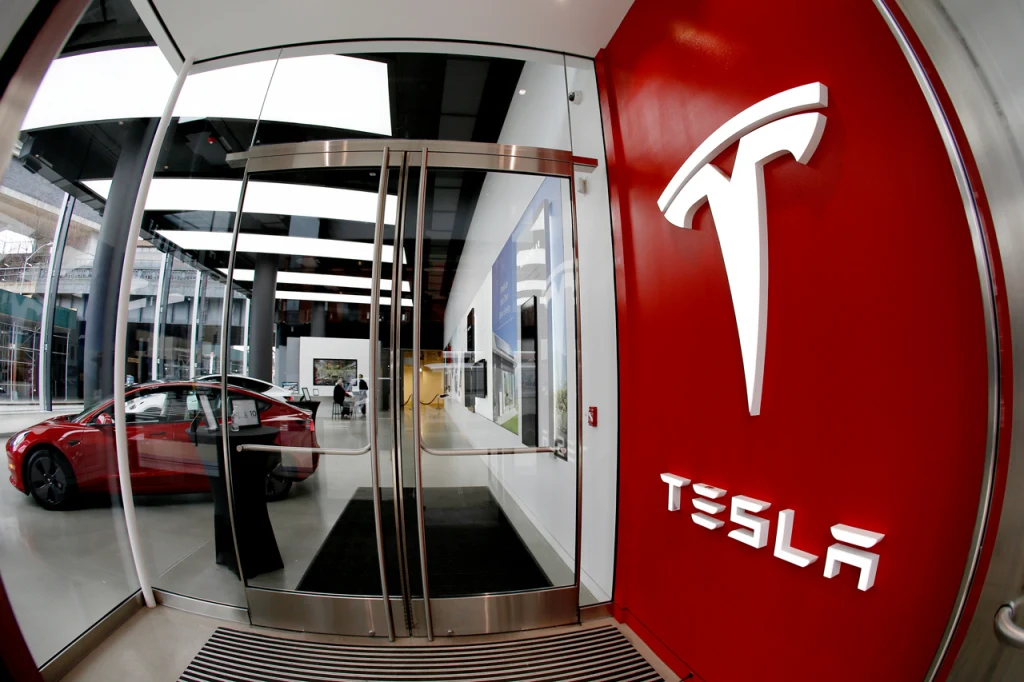- | 9:00 am
6 reasons why Tesla is failing, and they all have to do with design
Tesla has lost ground as the leader in EVs. Here’s why.

Tesla deliveries plummeted in the first quarter of 2024, even after the launch of its long-awaited Cybertruck finger guillotine. Year-over-year sales dropped 8.5%—the first decrease since 2020. It’s an “unmitigated disaster” for Tesla, analysts point out, even in a slower-than-anticipated EV market. For reference, other brands’ sales have increased in Q1: 62% for Hyundai, 88% for Kia, 65% for Toyota, and 62.6% BMW. There’s been a total 15% YoY boost for the EV industry’s Q1 2024, even counting Tesla’s plunge.
But it’s not a surprising dive. It is just the first clear warning sign of what we said last year: Bad design has turned Elon Musk’s success into a mess.
Here’s a list of most everything that Tesla needs to fix if it wants to hold onto its rapidly slipping crown.
1. STALE MODEL LINE
As Adrian Clarke, a professional car designer who now writes design critiques for The Autopian, told me last year: Tesla’s design feels stale. “The Model S is 10 years old now,” he said. Another year has passed since our conversation and nothing has changed. Its other cars—Models 3, X, and Y—look like spitting-image cousins of the Model S; they are effectively the same car with slightly different proportions.

While the company routinely updates mechanical parts and software, Clarke says Tesla’s physical design is “essentially, exactly the same car it was in 2013.” That kind of stagnancy is unheard of in this industry, which refreshes the look of car models every year in addition to larger-planned makeovers. “Most manufacturers would replace a model after about seven or eight years,” Clarke said.
“If Tesla doesn’t implement new models fairly quickly—adding at least one or two models in 2023-24—it will not be able to compete on the same level with other major players, such as VW, Toyota, and Mercedes,” says Adrian Schafer, professor of mobility and industrial design at German University in Cairo.
Musk released the Cybertruck this year, but it been a design disaster of its own, tallying up design infractions left and right.
Tesla definitely needs updates and more models. It needs an SUV—one of the fastest-growing EV segments at the moment—like the BMW iX or the Porsche Cayenne EV. Also, it needs a cheaper car to compete with the likes of the Nissan Leaf, the Renault Zoe, and the BMW i3—but that’s a segment Clarke says Tesla won’t be able to touch because they just don’t have the bandwidth or structure to produce an affordable car (more on this point later).
He may be right: According to three sources and internal emails seen by Reuters, Tesla has cancelled its plans for an affordable car (a report that Musk has vehemently denied).
2. BLAND DESIGN
Tesla’s design was never particularly exciting to begin with, but that actually was a good thing back in 2012, when its first commercial model launched. “I call it blandly handsome,” Clarke told me. The Model S introduced the design that people now identify with the Austin-based auto manufacturer. Former Jaguar Land Rover designer Jeremy Newman called it “surprisingly conservative.”
But most people who buy cars don’t want to be on the bleeding edge of design. They just want a car that fits into their lives. A bold, futuristic design could have alienated potential early Tesla buyers, who were already wary of the new, unproven EV technology.

Now that we all know electric cars, it’s time to give people something to get excited about. Companies like Hyundai and Kia are already offering new looks with distinctive personalities that are getting consumers excited, as their increasing sales demonstrate. Even Renault just released a relatively inexpensive and wonderful EV version of its legendary R5 that drinks straight out of the company’s vintage design bottle, turning old into bold. People are loving it.
To be fair, the Cybertruck looks unusual. Musk correctly referred to it as “a cyberpunk or Blade Runner” car. It clearly took a completely different design route than Tesla’s other vehicles. You may like it or hate it, but it’s definitely not bland. Is that a good thing, though? Depends on whom you ask. For instance, when Musk unveiled the Cybertruck, Frank Stephenson—considered one of the most influential automotive designers of our time—called it “cold, sterile, and almost repulsive.”
3. PRODUCTION PROBLEMS
New and futuristic can often translate to slow and broken on the production line. And in the case of the Cybertruck, the design made it extremely hard to produce, resulting in delayed timelines.
Tesla blamed the supply chain, but Clarke and others in the industry had other ideas. “As soon as we saw [the Cybertruck], everyone I know in the industry started laughing” because it was going to be impossible to make,” Clarke said during an interview last year. Musk admitted that the Cybertruck’s straight panels were indeed extremely hard to make, requiring impossible manufacturing specs. That is why all the trucks look slightly off and oddly different.
4. POOR QUALITY
Tesla has bottlenecked and damaged its production capabilities and quality by keeping every aspect of manufacturing in-house—rather than partnering with third parties to help craft and manufacture components. Musk believes this strategy will eventually give the company a manufacturing cost advantage, but not everyone agrees this is possible.
Musk’s decisions has led to several quality issues, as seen in the oversize touchscreen Tesla added to the Model S in 2012. Tesla sourced screens and electronics that were not graded for cars. Despite the company’s boldness, it didn’t account for the fact that electronics in cars get subjected to extreme temperature and light conditions. The screens failed, which resulted in a major recall program that reached all the way to China, and prompted an investigation by the U.S. National Highway Traffic Safety Administration and Germany’s Federal Motor Transport Authority.
The industry uses car-grade suppliers to execute designs on such components as seats for a reason. It’s impossible for Tesla to compete with suppliers on price and quality since they are specialized in whatever they do. The experience and the economies of scale are just not on Tesla’s side.
Then there are the more egregious issues due to poor execution and design-planning. Recently, Tesla has come under fire for its potentially finger-chopping frunk. The debacle could have been avoided with pinch sensors and a design that avoids heavy, razor-blade-sharp stainless steel panels.

5. NO DEALERSHIPS
Tesla has trouble servicing customers who are having problems because the company cuts corners with its customer relations. A very poor user experience design choice. They don’t run actual dealerships, which means “they can’t take your car away, give you a courtesy car and a nice cappuccino while your car is being fixed,” as Clarke told me. People truly value this—and they value their time, especially in the high-end market segment Tesla caters to.
6. BROKEN PROMISES
Musk has promised full-autonomous driving—a car that will safely drive you anywhere and through any road conditions without your ever needing to touch the wheel—for nearly a decade. Meanwhile, companies including Volvo—using Waymo technology—and Mercedes have beaten Tesla at this game. Not only is Tesla behind, but Musk’s false autonomous claims are now the object of consumer lawsuits and a federal criminal probe. Teslas’s full self driving (FSD) is still in beta phase—now on version 12—and far away from being the magical AI that Musk sold to all of us.
But that’s just one of many broken promises. Musk has repeatedly failed to meet the original release dates for all Tesla vehicles, from its original Model S to its Semi.
All this has seriously damaged Tesla’s brand. In a recent poll, only 13.4% of U.S. adults have a favorable view of Tesla compared to 28.4% in January 2022. J.D. Power puts the company almost at the bottom of its 2022 car quality survey, made using 84,165 verified U.S. owners. Consumer Reports’ 2022 survey ranks Tesla’s reliability at number 19 out of 28 brands in the United States.
Companies including BMW, Ford, Toyota, Kia, and Subaru enjoyed around a 60% loyalty rate in 2022. Tesla’s dismal public image is a big problem that affected the sales plunge. That’s why, according to S&P Global Mobility, Tesla’s U.S. EV market share will continue to drop until it reaches 20% by 2025. As legendary investor and Columbia Business School professor emeritus Bruce Greenwald had already pointed out in 2021: “Twenty years from now, you really think that they’re going to dominate the auto market? Not a chance.”
We are three years into those two decades. This drop is not just a bleep. It’s a sign of much bigger trouble ahead.





































